In the previous part of our story (click here) we saw how repeated eating of large amounts of starch and sugar can in the long term lead to problems with our insulin mechanism. This can then trigger a whole of host of metabolic disorders including Type II Diabetes, Obesity and Chronic Inflammatory Conditions.
How can we use diet to over come this?
Well, it is actually quite easy to make a difference. The key thing is that you have to give your insulin mechanism a rest. If you do this, the evidence is that in most people the damage caused to an over-used insulin system can be reversed, at least in part, and relatively quickly. By making better food and eating choices you can reverse the effects of Insulin Resistance.
And of course, the easiest way to give your insulin mechanism a rest is to reduce the foods in your diet that cause an insulin response – sugars and starches. This is the basis of the Low Carb diet.
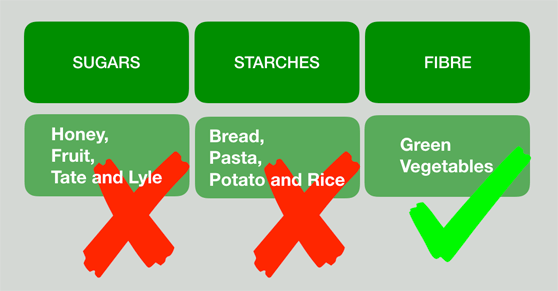
But a word of caution here. You may remember from the first part of this series of articles (here) that there are three types of carbohydrate – sugars, starches and fibre. Whilst you should be reducing the amount of the first two you must eat lots and lots of the third. So strictly speaking this is not a Low Carb diet rather a “Low Sugar, Low Starch, High Fibre” diet. Not quite so catchy as Low Carb but more accurate!
I aim to fill up to two thirds of my plate (at my main meal) with high fibre green vegetables. I would use a variety of methods to prepare that fibre – sometimes raw, often steamed, sometimes roasted, sometimes stir fried. I try to be seasonal (not alway successful at that one!) and use a variety of oils, dairy, nuts and herbs and spices to make the veg feel and taste different every day.
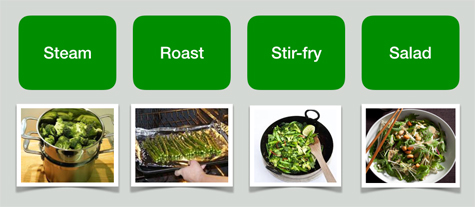
The next thing to consider after deciding to cut the starch and sugar and up your green fibre is to decide what else goes on your plate. From the first part of this series you will remember that there are three main macro-nutrients: Carbohydrates, Protein and Fats. If you are going to reduce the starch and sugar part of your carbs, what about protein and fat?

I label the eating regime I follow as ‘moderate protein’. Many of the conventional low carb diets go quite heavy on the protein and some even suggest limitless protein. You certainly need protein and good quality protein in your diet as it is an essential building material for your body and if you restrict it too much then you are prone to the state of atrophy where there is a reduction in muscle mass. However, there are a number of considerations if you eat too much protein.
In excess, your body can convert the extra protein into glucose (sugar) by a process known as gluconeogenesis. This glucose will, like any other glucose, trigger an insulin response and that is not what we are aiming for as we have decided to reduce sugar and starch in our diets.
There is also concern with too much protein if it is largely coming from meat sources. If you can purchase your meat from organic, pasture fed animals and consume meat that is minimally processed, then you are almost certainly OK. However, a lot of meat production is aimed at giving us cheap meat and this often leads to meat that is of poor quality and often containing chemicals and drugs that are harmful. So for this reason it is prudent to limit your protein.
I would also say that sourcing your protein from beans and pulses is far from perfect. These sources of protein are often very limited in the essential forms of protein that we need (and can readily get from meat and animal products) but are also rich sources in starchy carbohydrate – which of course we are restricting on this way of eating – and also plant lectins which are inflammatory – I will post an article on lectins. Moderate protein from well sourced meat, fish, diary, eggs and selected nuts (see my article on nuts for the discussion of ‘selected’) is an ideal mix.
As a guide, I aim for about 1 gramme of protein for each kilogram of lean body mass per day. My own calculation is shown in the panel below.
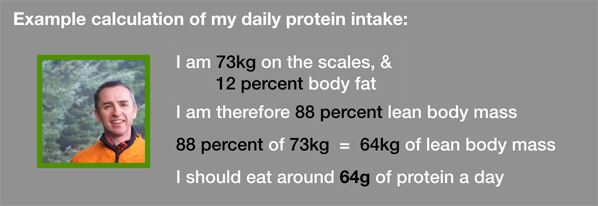
To put my 64 grammes of protein per day into perspective, one chicken breast is typically 25-30g of protein, one portion of salmon fillet is 20-25g and an egg is 10-12g.
The third of the macro nutrients to consider is Fat. In some ways this is the one I restrict the least but there are still a few important considerations.
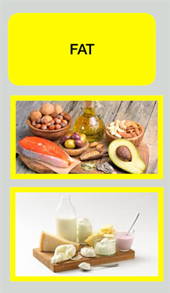
I would entirely avoid synthetic fats. By this I mean fats that have to be extracted from nuts and seeds by chemical means or that are created from chemical processes or are solidified by chemical means. This means most vegetable (e.g. sunflower oil) and nut and seed oils are to be avoided and all margarines and shortenings that are not derived from animal fat. These derived oils are high in inflammatory omega 6 fats, they are generally unstable and so either denature on cooking or have chemicals added to them to prevent them going rancid and they often have traces of the chemicals used to extract them. Oils that can be derived from cold pressing are always preferable. For example, extra virgin olive oil, avocado oil, lard, butter and coconut oil are amongst the best sources of oil.
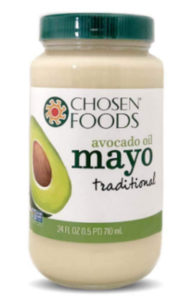
The synthetic oils that are to be avoided are cheap to produce and so are almost always those used in processing of food. If your lifestyle can adopt it, please please please reduce your consumption of processed foods and certainly those that contain synthetic fats (and sugars)! For this reason, you should always be careful even with things like bought mayonnaise and pesto as mostly cheap synthetic oils are used in their manufacture.
The other oils and fats can mostly be eaten quite freely on this low carbohydrate regime. There are still a few caveats. If you have the ApOε gene (I will post an article about that one) then there is evidence that eating a lot of the saturated fats can be inflammatory for you and so should be minimised. If one of your main aims is weightloss then it may be wise to restrict fats too. But, fats give food its flavour, texture, bring with it key nutrients (always for example add fat to your fibrous vegetables so that you get a better proportion of the nutrients from them) and make you feel full. If you need to snack, do so on oils and fats as these do not produce an insulin response – a handful of olives, avocado, nuts, seeds, cheese are all good snack foods.
So there you have the basic principles of the Low Carb diet – well the low sugar, low starch, high fibre, moderate protein, low synthetic oil diet! The next part of this article series (click here) looks at the more common ‘branded’ low carb diets and the pluses and minuses of each.
